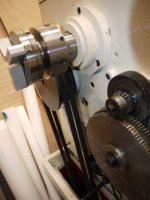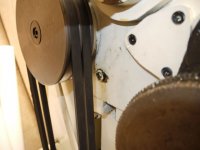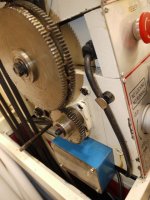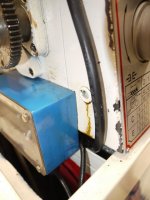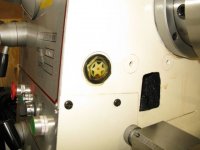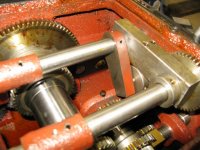I have filled oil on my main gearbox where I took off the whole top cover and inspected everything when the machine was delivered.
Since I at that time bought a big bucket of oil I thought I could be nice with my baby and change oil after a fair bit of use.
Now checking up, the screws to drain the machine is placed on a completely stupid place - in between the driving belt and the cogwheels
The same applies for the gear box bellow the headstock controlling the feeds. The drain is even worse placed - closer to the belt.
I have been considering pumping it out of the main gear box since I can open the cover and drop a magnet down there if there is some metal dust from the cogwheels being broken in. This is however not possible for the feeds gearbox where there is only "fill" screw and a "drain" equivalent :scratchhead:
But what do you do?
Mount some form of custom drain pipe leading the oil past the belts? Is there any stock kits available for doing these operations?
I would figure something out but if any one feels to chip in with your experiences - feel free
I can't post pics at the moment but I'm sure we all pretty much have the same or similar configs.
Kent
Since I at that time bought a big bucket of oil I thought I could be nice with my baby and change oil after a fair bit of use.
Now checking up, the screws to drain the machine is placed on a completely stupid place - in between the driving belt and the cogwheels
The same applies for the gear box bellow the headstock controlling the feeds. The drain is even worse placed - closer to the belt.
I have been considering pumping it out of the main gear box since I can open the cover and drop a magnet down there if there is some metal dust from the cogwheels being broken in. This is however not possible for the feeds gearbox where there is only "fill" screw and a "drain" equivalent :scratchhead:
But what do you do?
Mount some form of custom drain pipe leading the oil past the belts? Is there any stock kits available for doing these operations?
I would figure something out but if any one feels to chip in with your experiences - feel free
I can't post pics at the moment but I'm sure we all pretty much have the same or similar configs.
Kent
